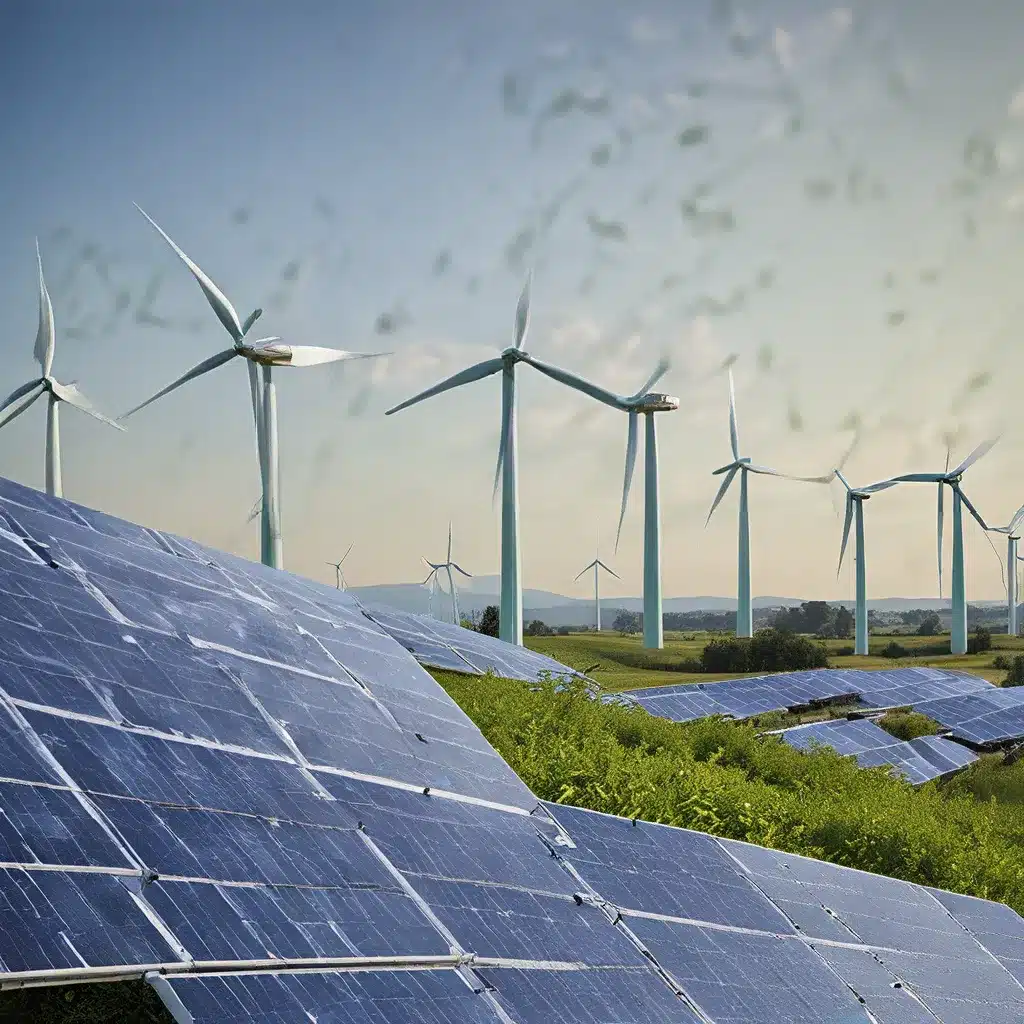
Ah, the age-old dilemma – how do we get people to embrace renewable energy? It’s a challenge that’s been puzzling governments and industry leaders for years. But fear not, my friends, because I’ve got the inside scoop on a game-changing strategy: renewable rebates.
Now, I know what you’re thinking – “Rebates? Really? That’s the solution to our clean energy woes?” But hear me out, because these aren’t your average run-of-the-mill rebates. These are strategic, well-designed incentives that can make a real difference in driving the adoption of green technologies.
Unlocking the Power of Subsidies
Let’s start with the basics. Governments around the world are offering a dizzying array of incentives to encourage the use of renewable energy, from clean energy funds and property tax exemptions to solar incentive programs and renewable energy credit initiatives. The goal? To make it easier for businesses and consumers to take the plunge and go green.
But as our friends at MIT have discovered, setting the right level of subsidy is a delicate balancing act. Get it wrong, and you could end up with a program that’s woefully inefficient, leaving both the government and the consumer worse off.
That’s where the MIT model comes into play. By taking a deep dive into consumer behavior and supplier decision-making, the researchers have developed a tool that can help policymakers optimize their subsidy programs to meet their adoption targets at the lowest possible cost.
The key? Recognizing the full range of possible demand outcomes, not just the average. As it turns out, ignoring demand uncertainty can lead to serious miscalculations, with subsidies that are too low to spur the desired level of adoption.
Putting the Model to the Test
To see this in action, let’s take a look at the Chevy Volt case study. When the researchers crunched the numbers based on average demand, the optimal subsidy to hit a target of 3,500 electric vehicles was a measly $7,500. But when they factored in demand uncertainty, that number nearly doubled to around $15,000.
The same pattern held true across the board – higher subsidies, higher production levels, and lower supplier profits, all to the benefit of the consumer. And the greater the uncertainty in demand, the better the deal for the end-user.
“As an example, consider a target of 3,500 electric vehicles,” explains Professor Georgia Perakis. “By the average method, the optimal subsidy to get that number of electric vehicles on the road is $7,500. But taking into account uncertainty, the optimal subsidy for that target is about twice as high.”
The Surprising Twists and Turns
But the insights from the MIT team don’t stop there. Their research has unearthed a few unexpected findings that could have a major impact on how governments design their renewable energy incentive programs.
For instance, their analyses revealed that including demand uncertainty in the decision-making process can lead to some counterintuitive results. In one case, they found that increasing the uncertainty in demand can actually benefit the consumer at the expense of the government and industry.
“The greater the uncertainty in demand – that is, the wider the variability – the more consumers will benefit,” Perakis explains. “This is because the optimal subsidies are higher, government expenditures for consumer rebates are higher, the quantities manufactured by suppliers are higher, and prices and supplier profits are lower.”
And that’s not all. The researchers also discovered that the timing of subsidies can be just as important as the level of the subsidies. In their analysis of the German solar market, for example, they found that the current subsidy program is not economically efficient, and that increasing current subsidies while phasing them out faster could actually achieve the same target adoption levels at a lower overall cost.
Embracing the Power of Data and Analytics
So, what’s the secret sauce behind these groundbreaking findings? Data and analytics, my friends. And not just any old data – we’re talking energy data portals, remote sensing, and advanced analytics that can provide the critical insights needed to unlock a treasure trove of green incentives.
As our friends at Forbes have highlighted, these technological tools are transforming the way businesses approach renewable energy projects. By leveraging energy data portals like the DSIRE portal and the Energy Zones Mapping Tool, companies can navigate the complex landscape of green incentives and identify the best locations for their renewable energy initiatives.
But the real magic happens when you combine these data sources with remote sensing and advanced analytics. Think high-resolution aerial base maps, change detection algorithms, and sophisticated pixel math – all of which can help businesses optimize their renewable energy projects for maximum efficiency and return on investment.
Unlocking a Greener Future
And the best part? This technology-driven approach isn’t just benefiting businesses – it’s also empowering governments to design more effective renewable energy incentive programs.
As the team at the California Energy Commission has demonstrated, a wide range of incentives are available to support the adoption of renewable energy and building decarbonization, from geothermal grants and agricultural solar programs to residential solar permit reporting and electric home incentives.
But the real game-changer is the way these programs are leveraging data and analytics to identify the best opportunities and streamline the process for businesses and consumers. By harnessing the power of technology, they’re making it easier than ever for people to go green and tap into the benefits of renewable energy.
So, if you’re looking to embrace a greener future, keep your eyes peeled for those renewable rebates and green incentives. With the right data-driven approach, they just might be the key to unlocking a sustainable tomorrow. Firewinder is here to guide you every step of the way, so don’t hesitate to reach out and let’s get started on your renewable energy journey!

